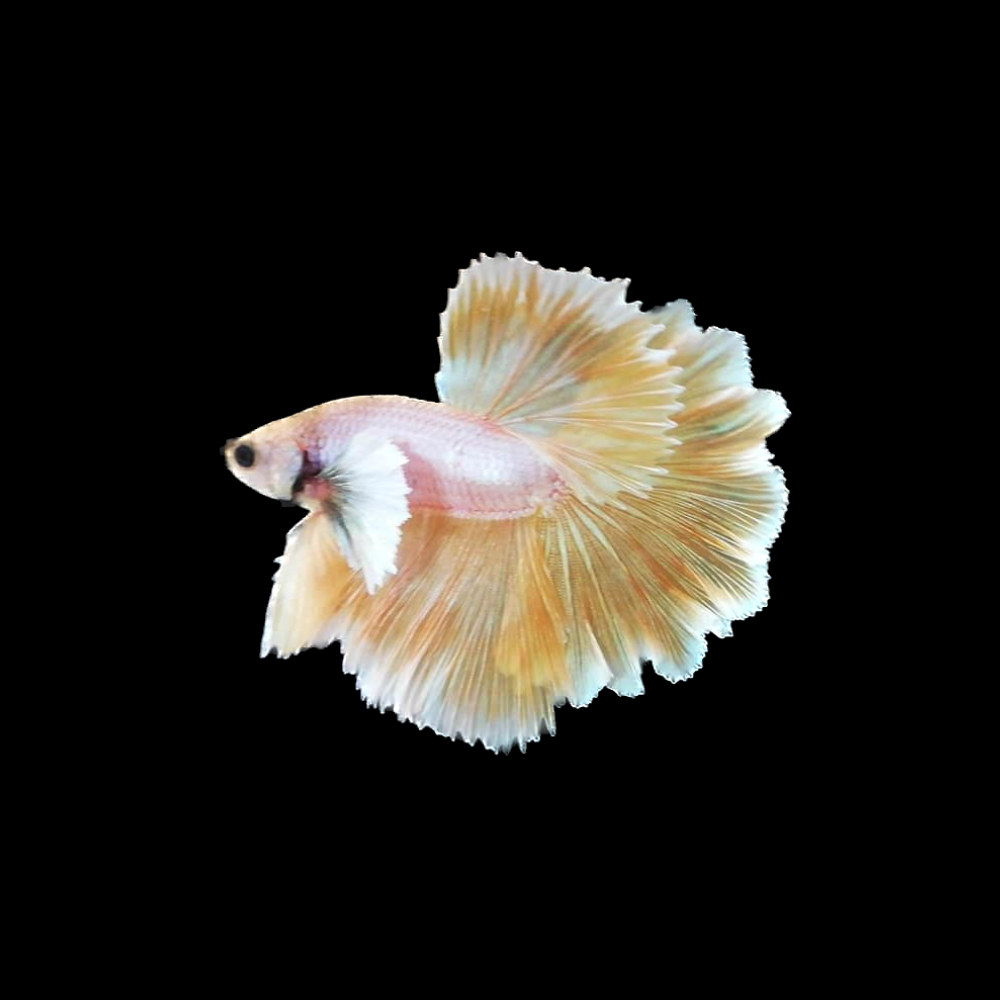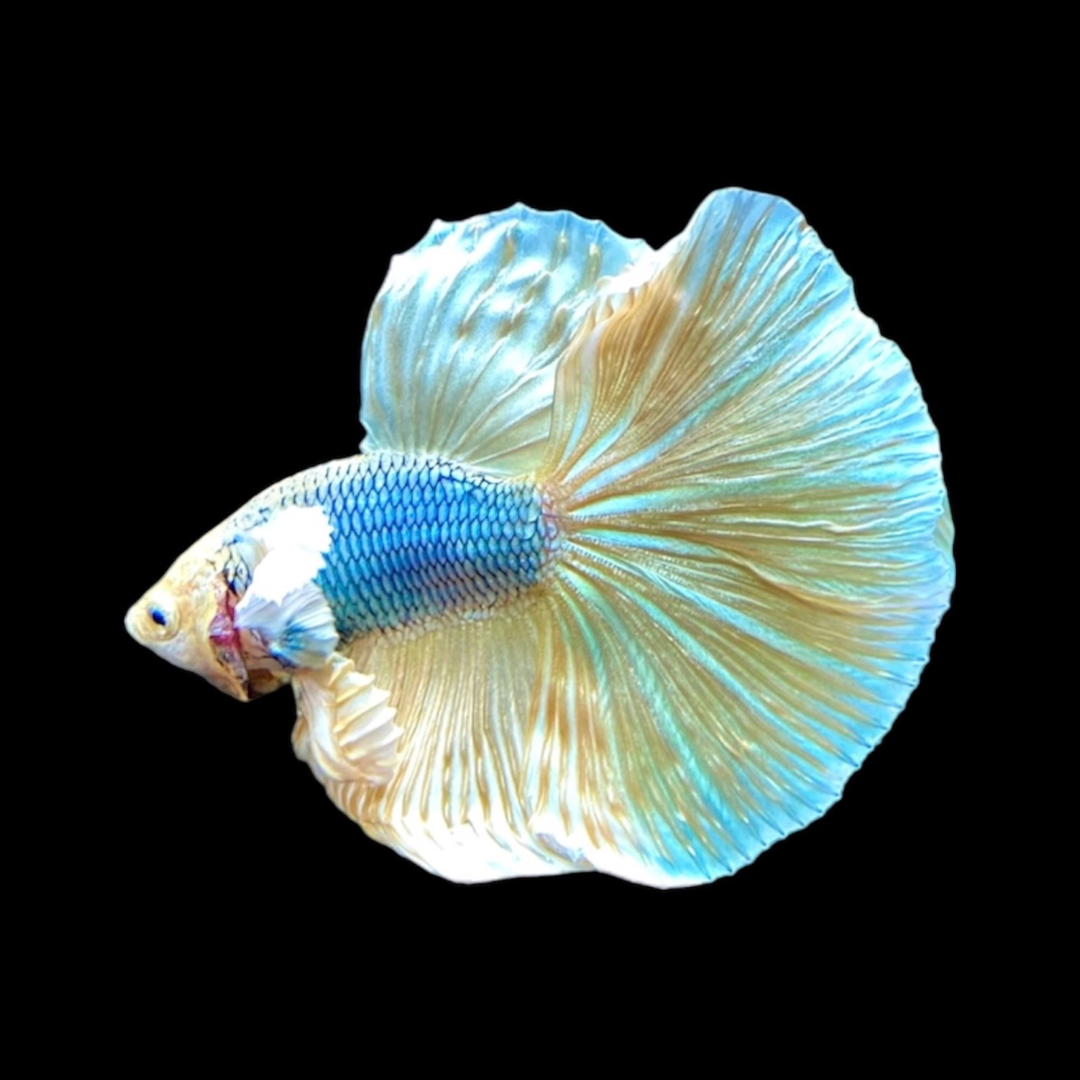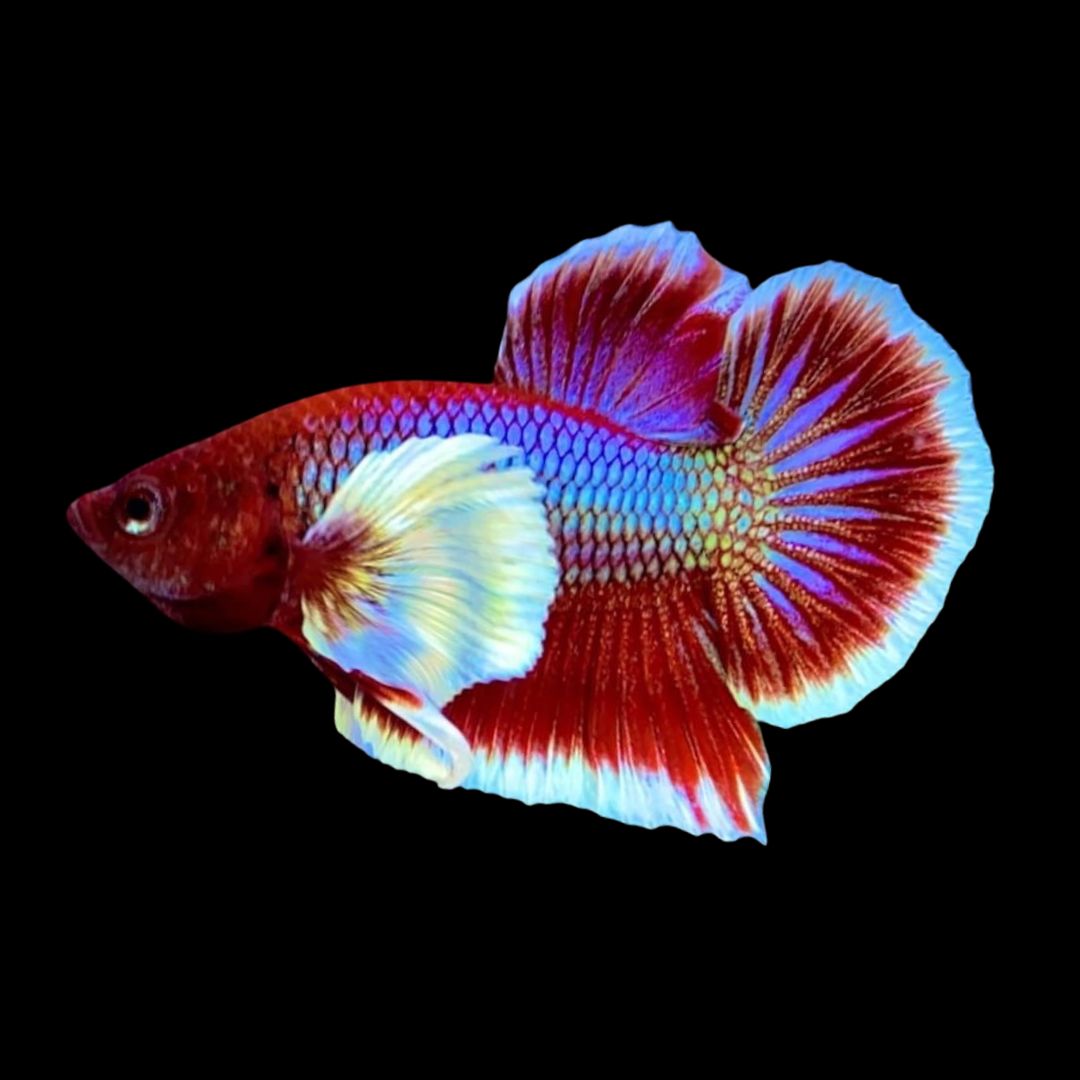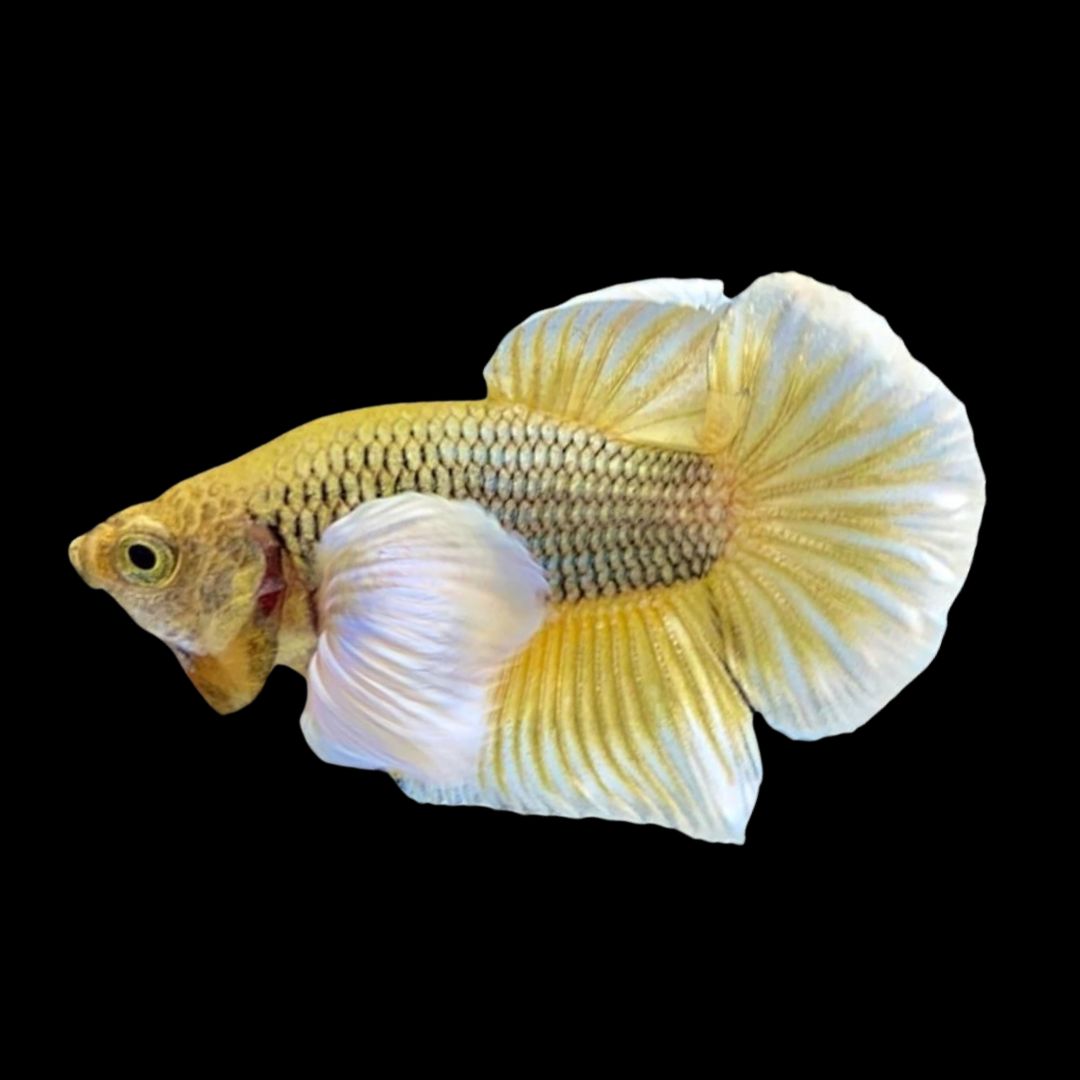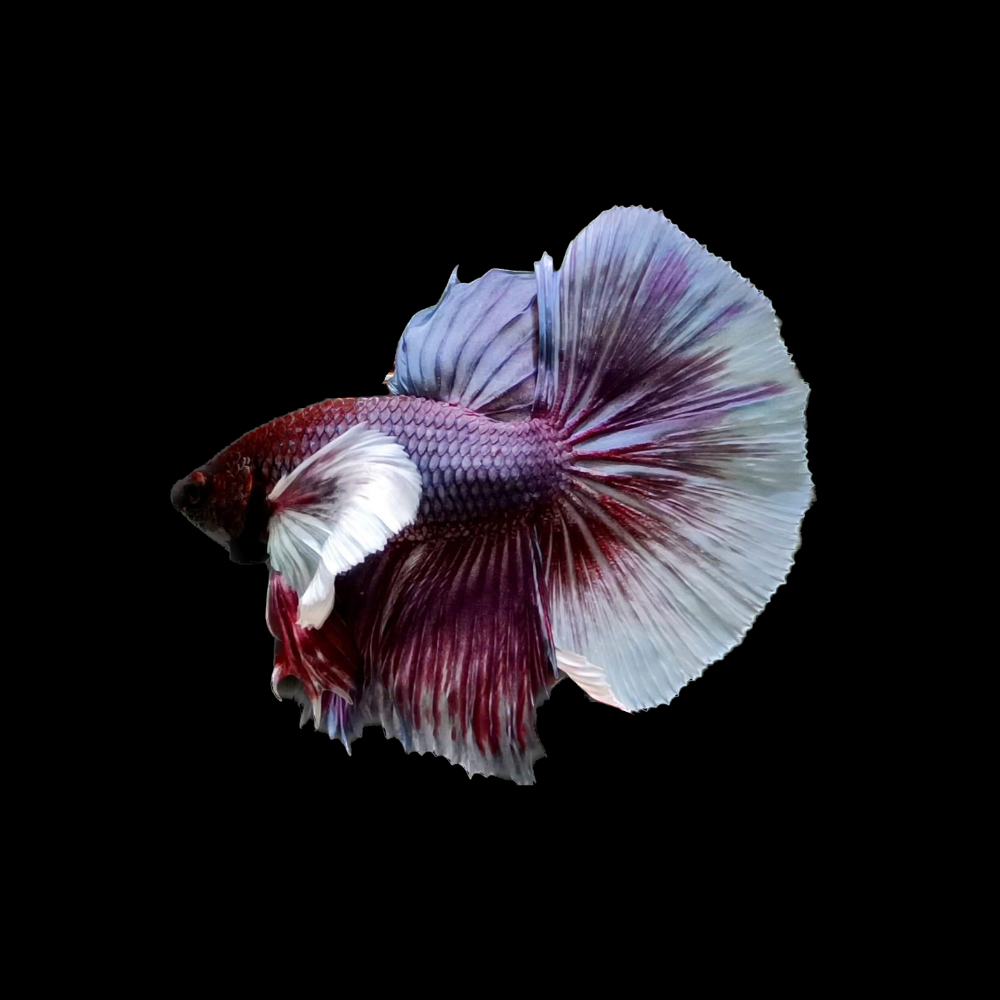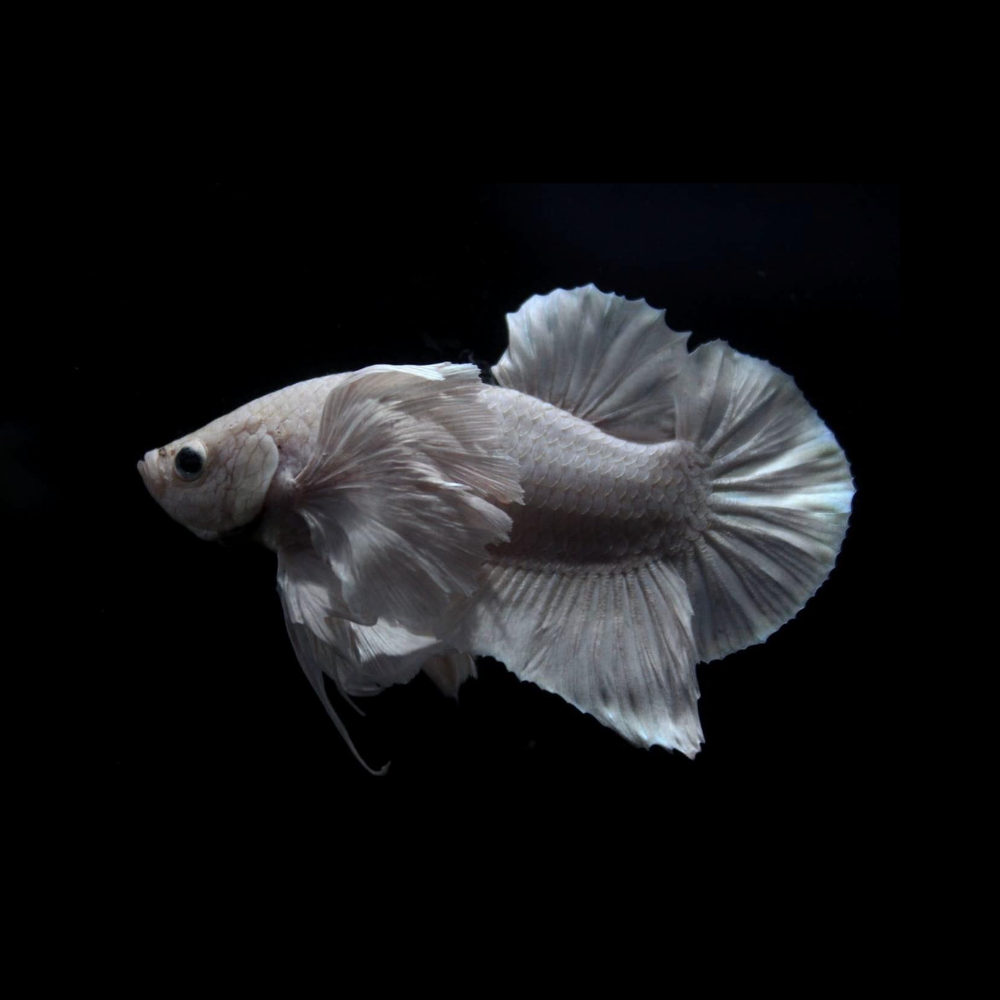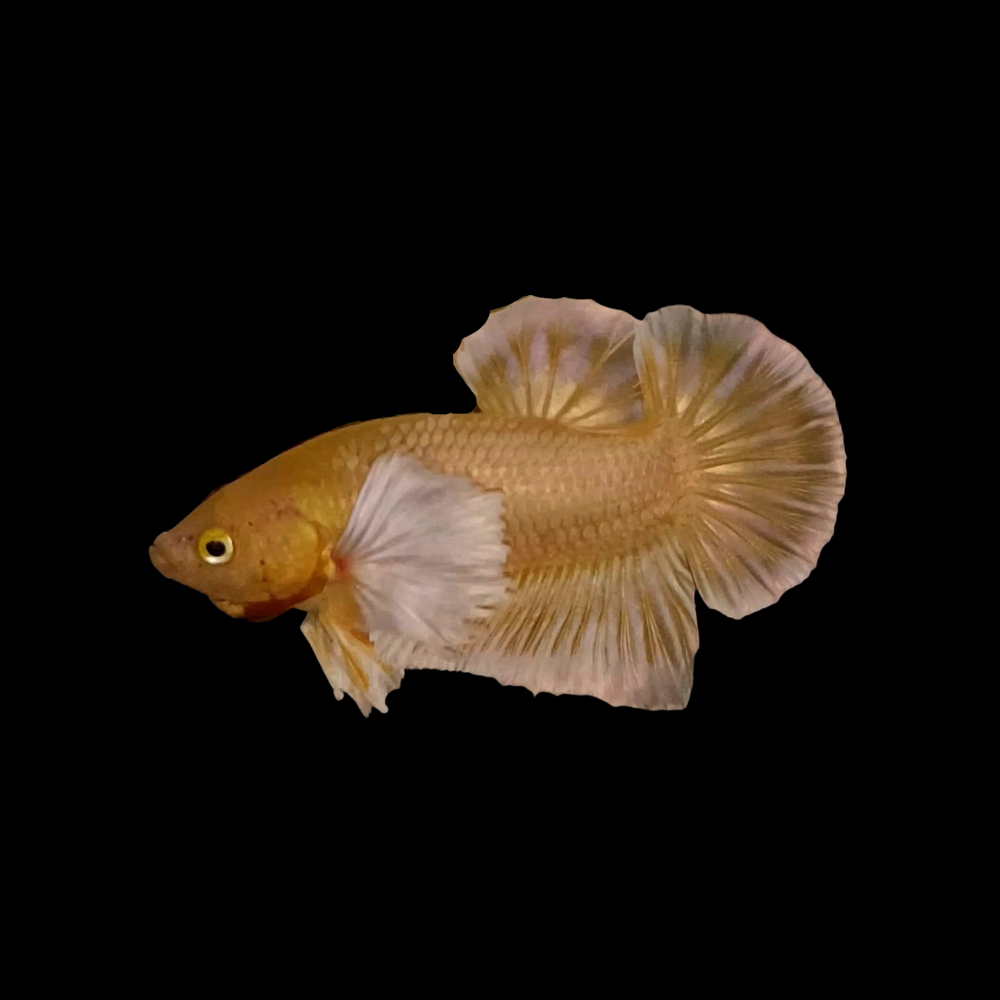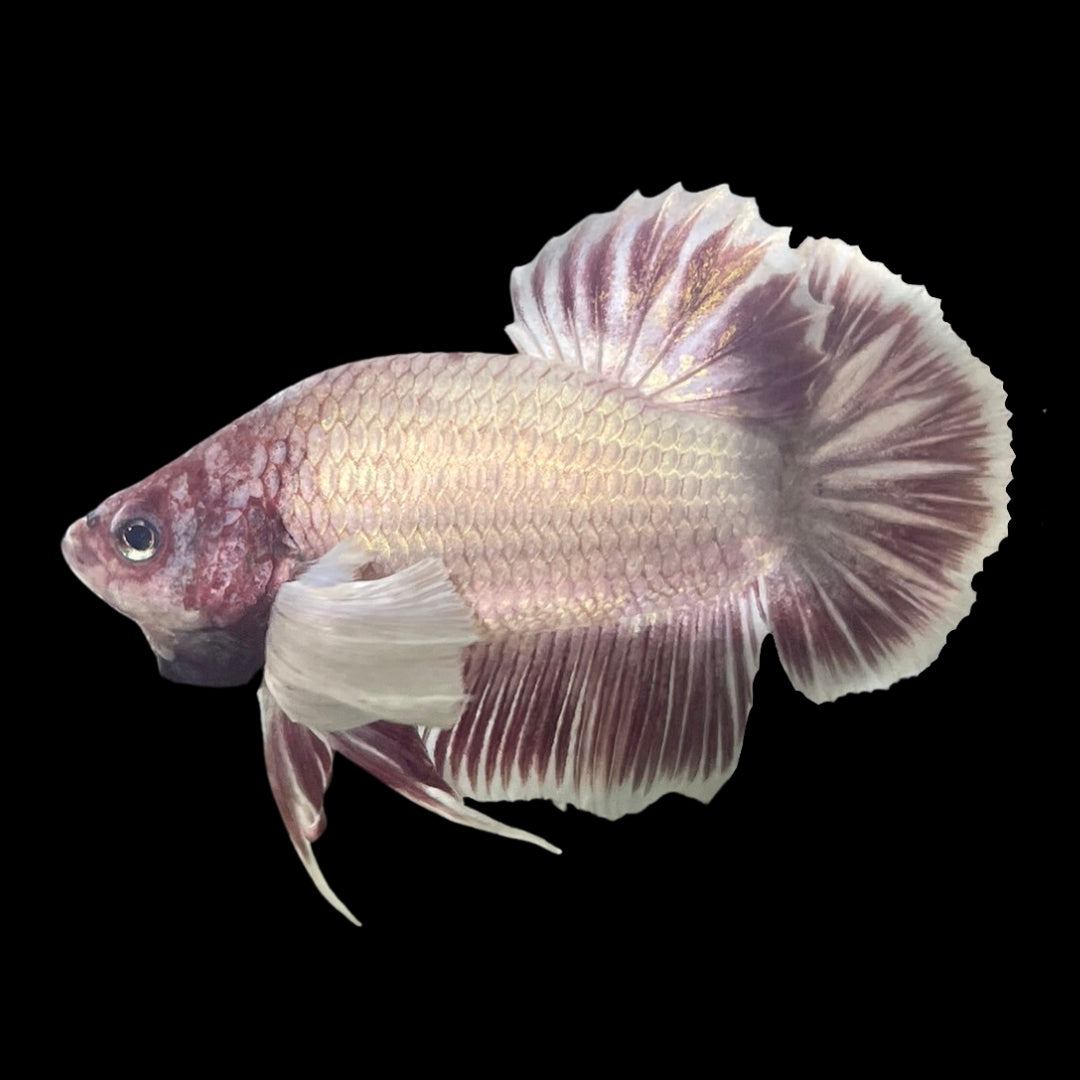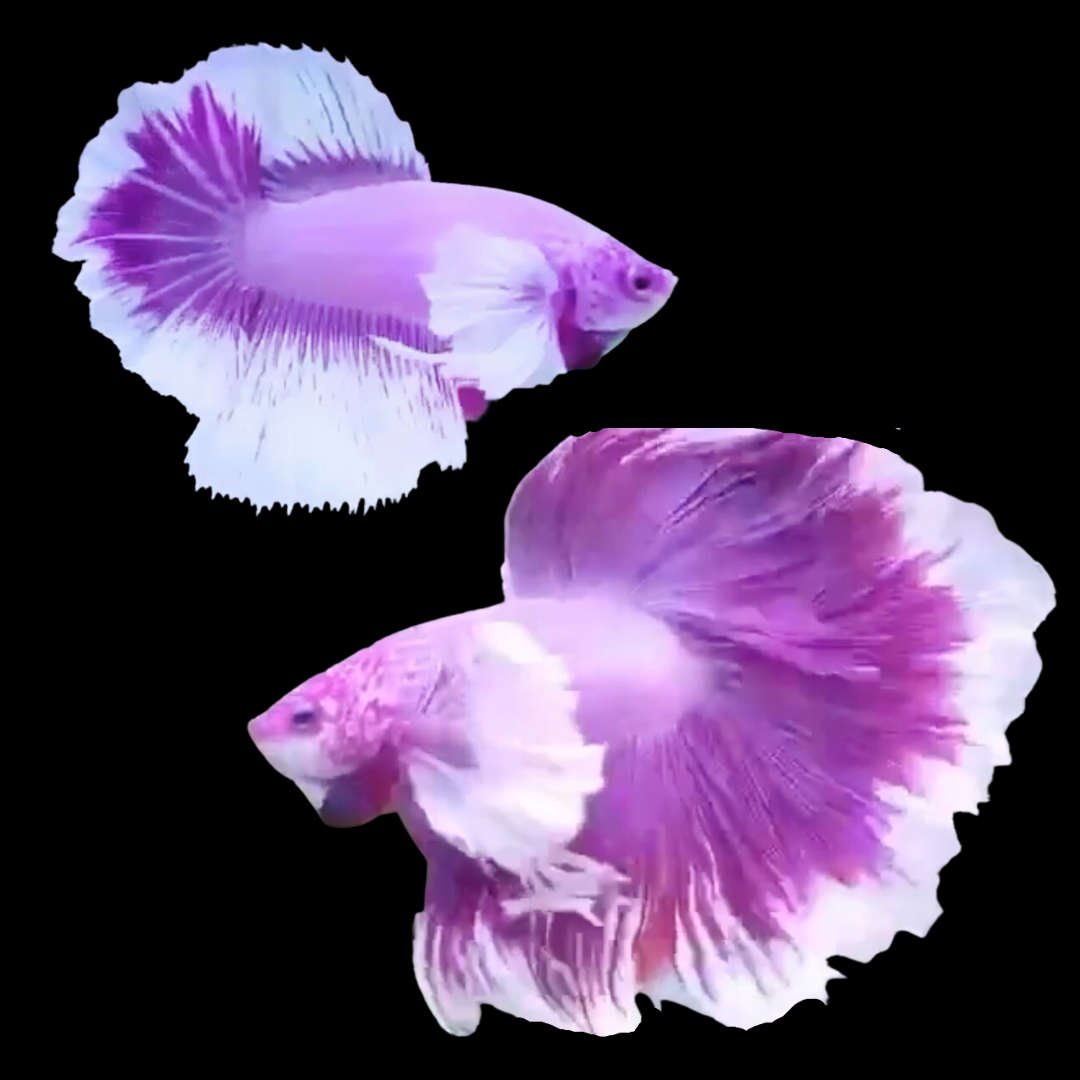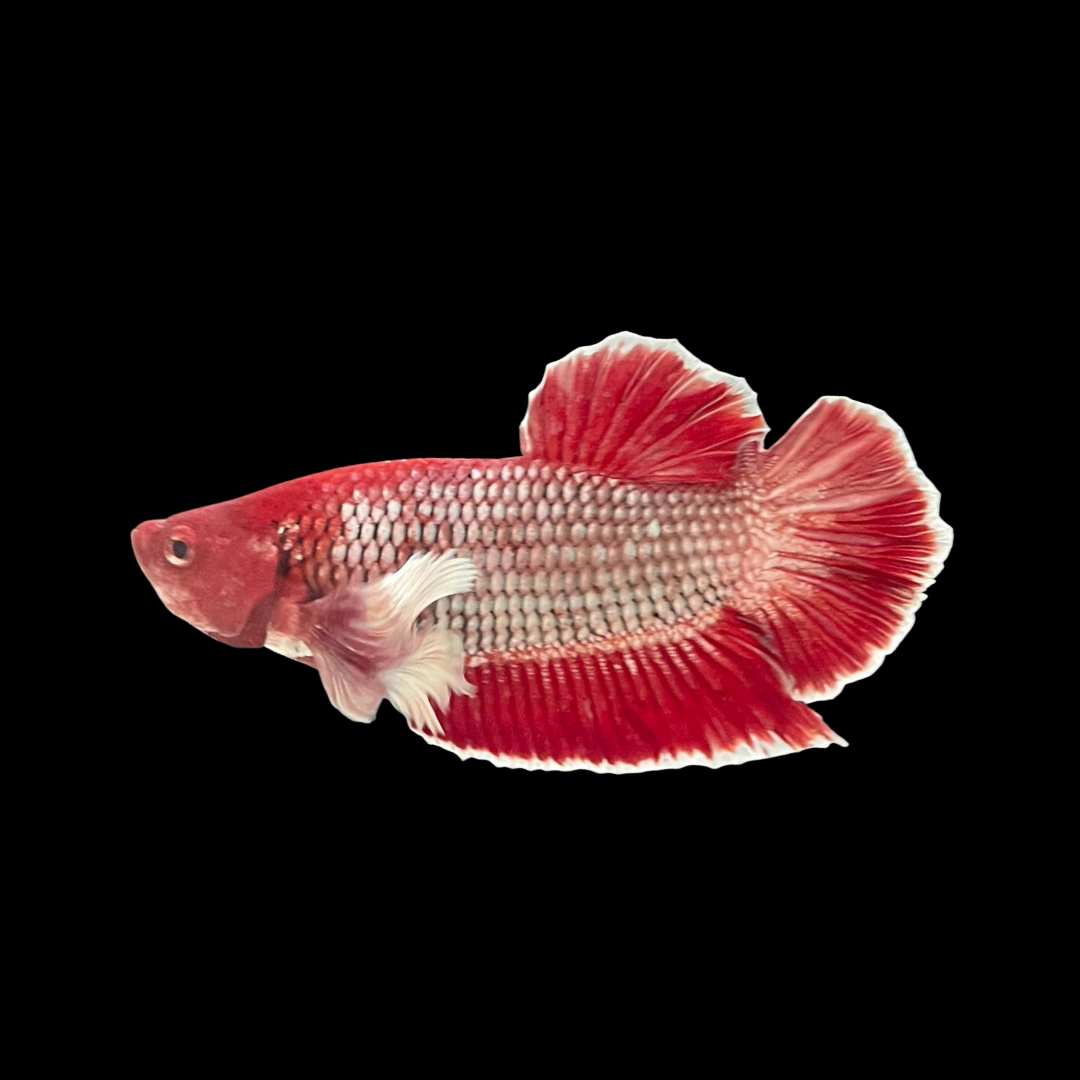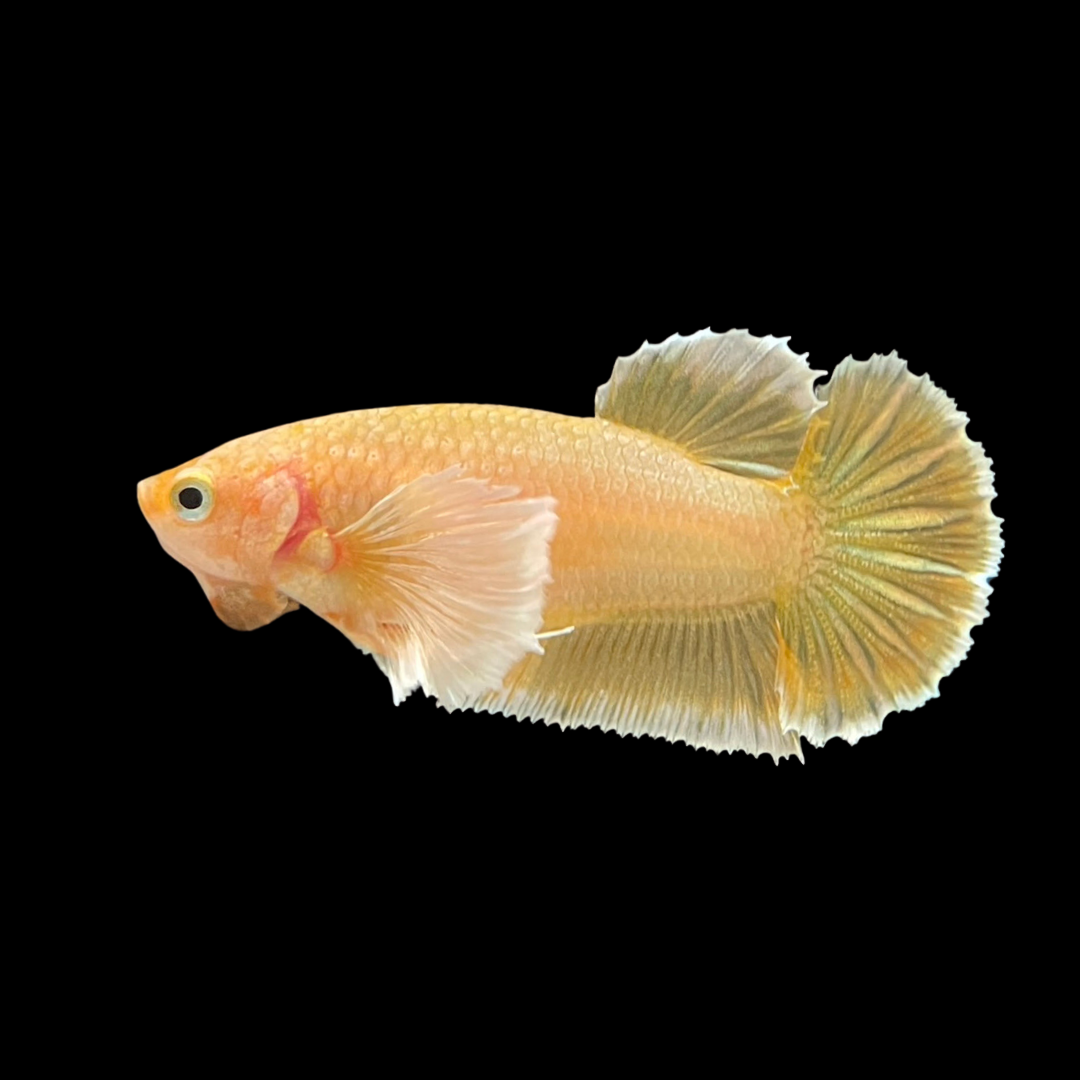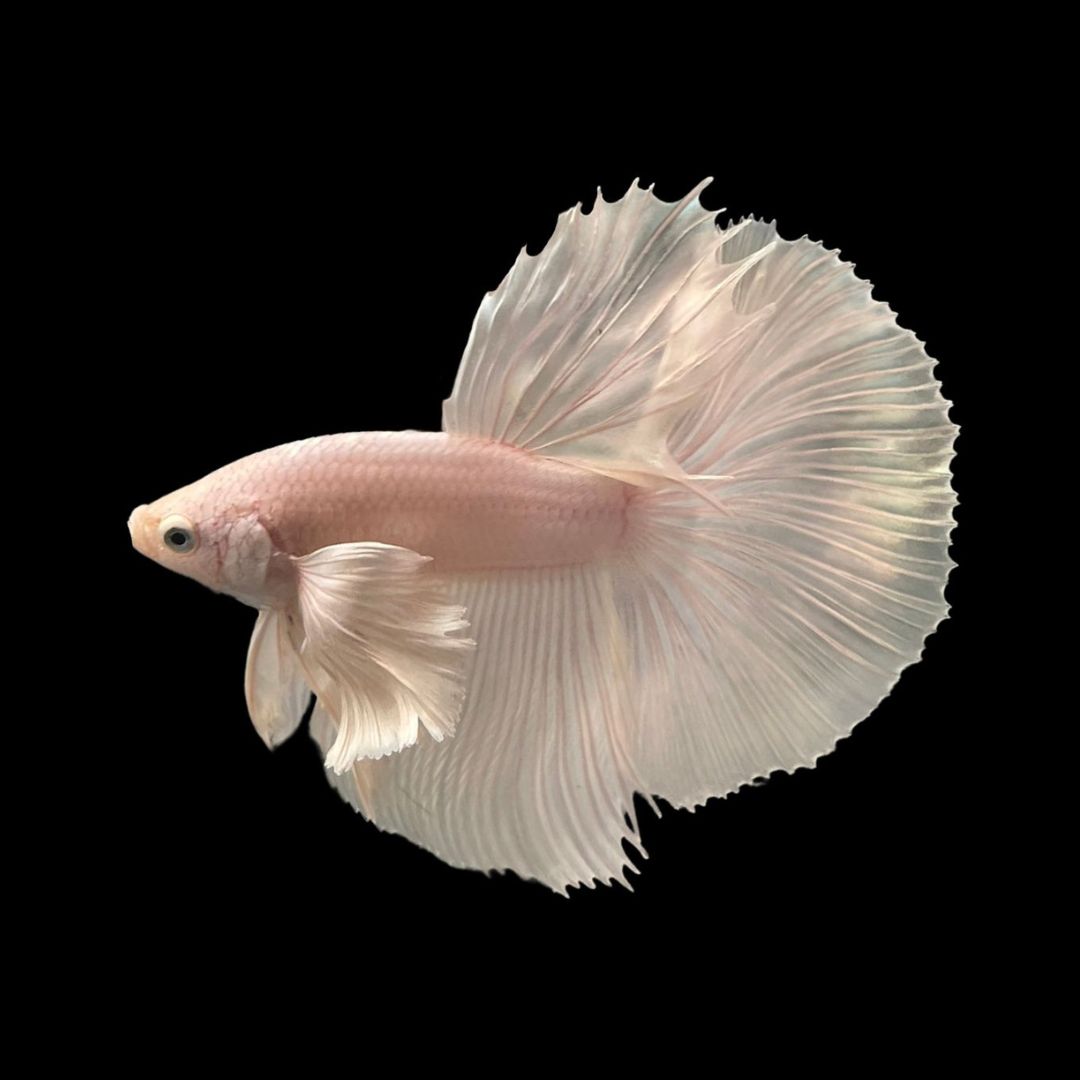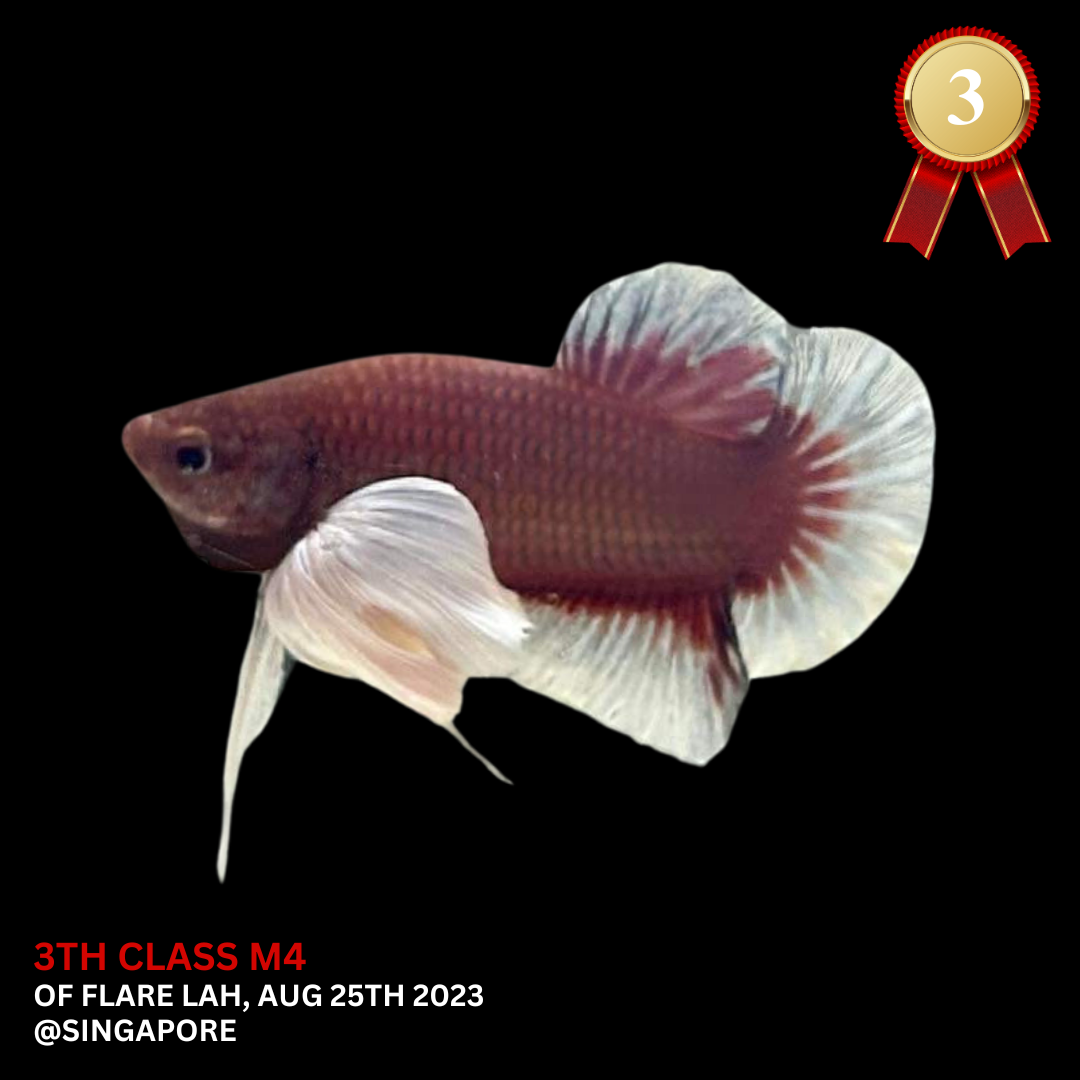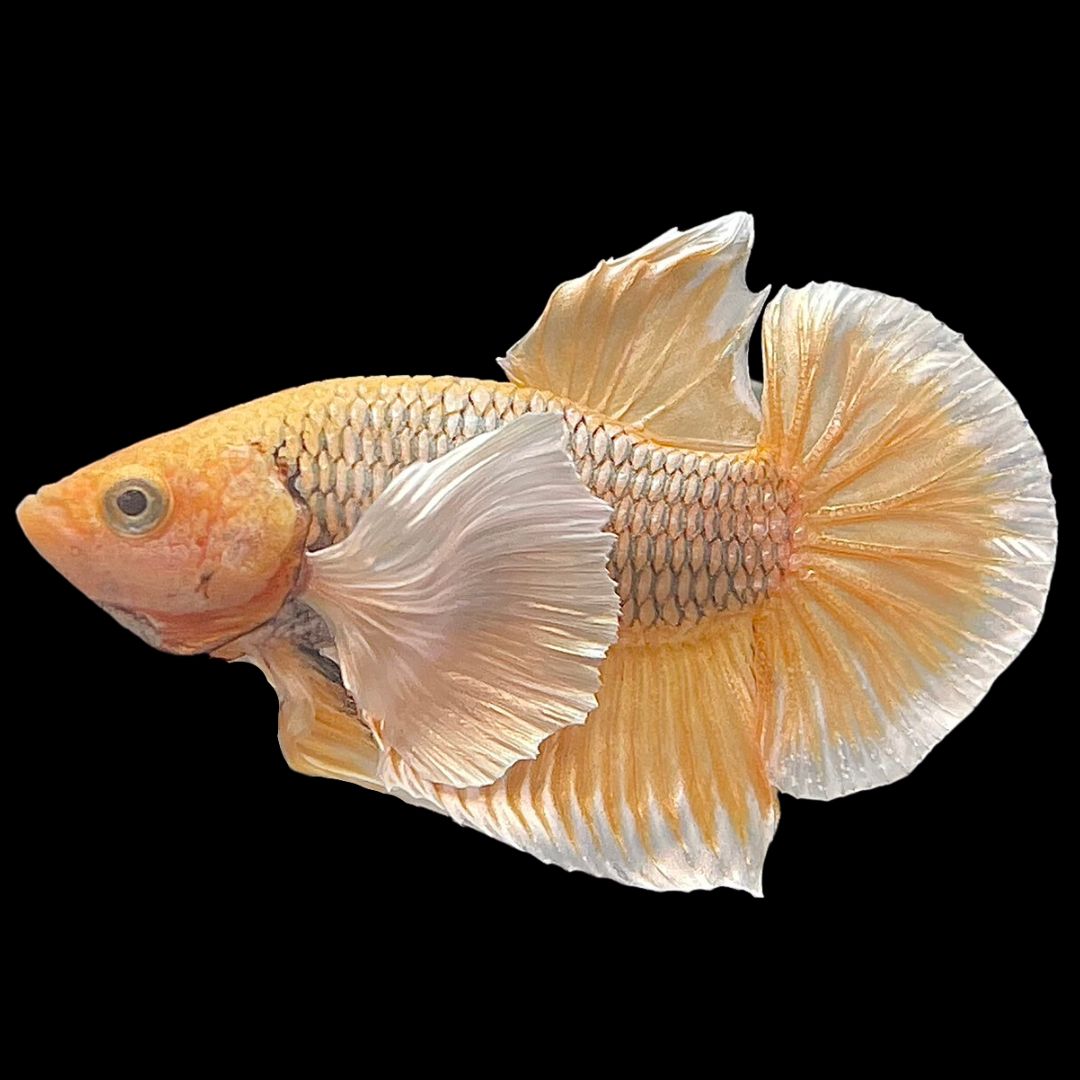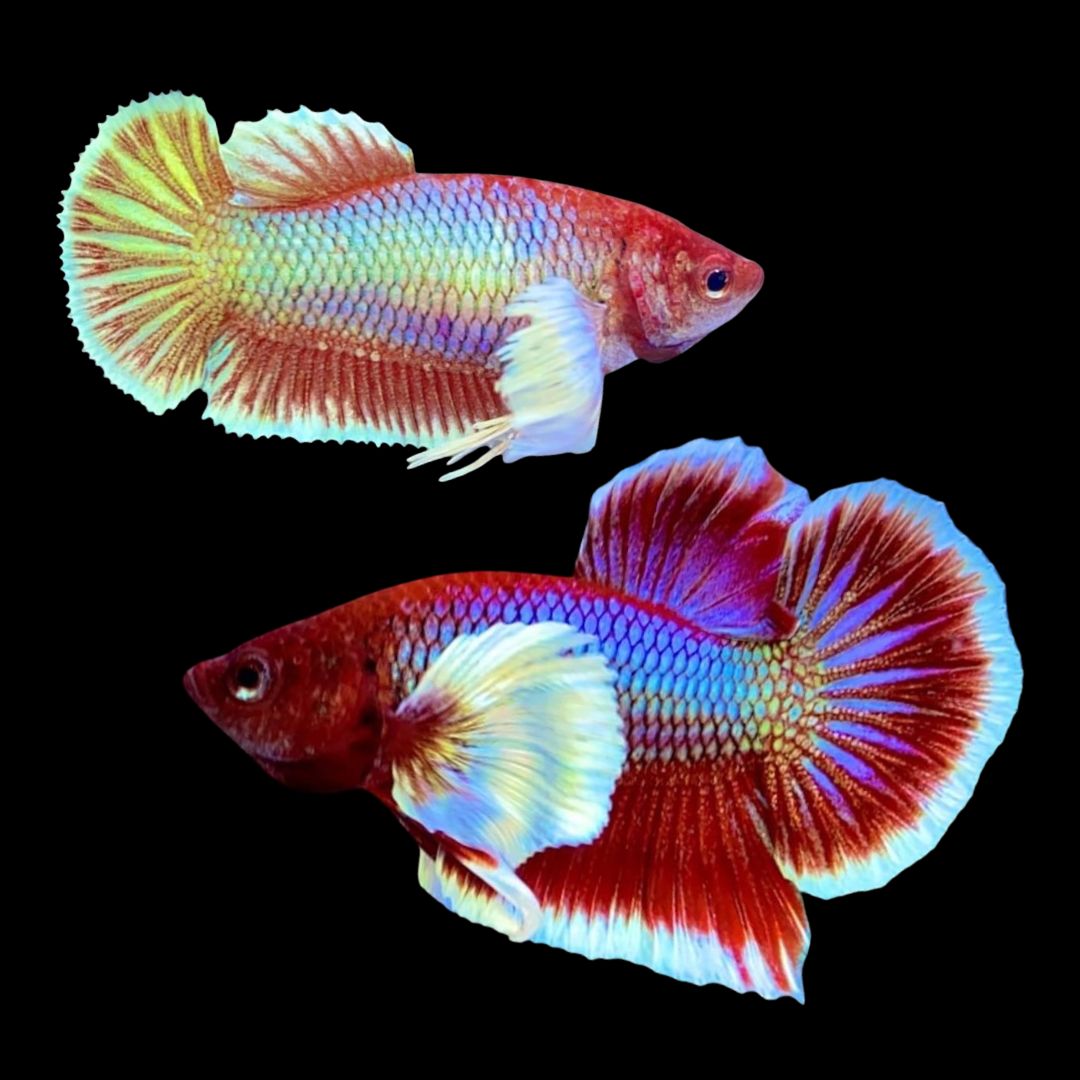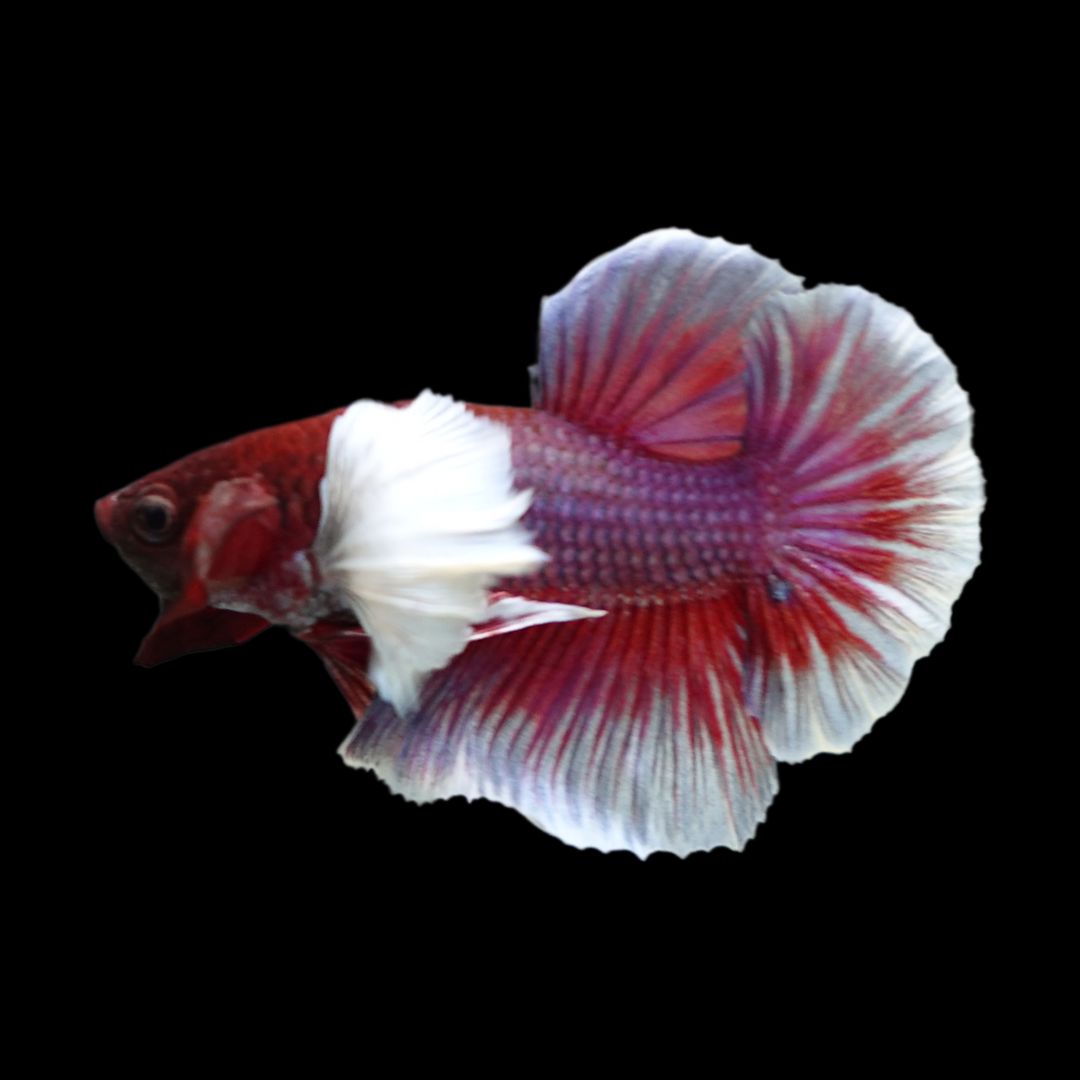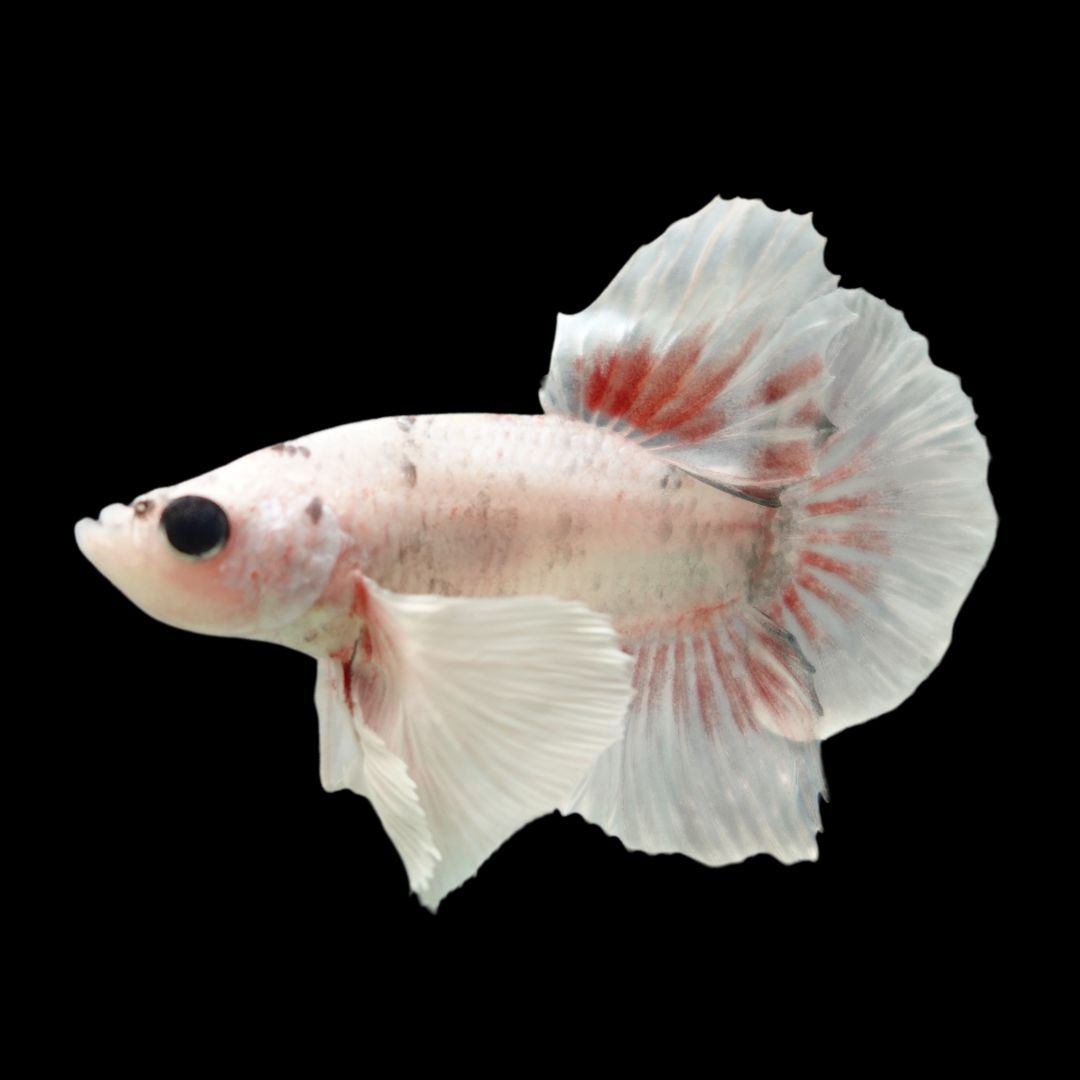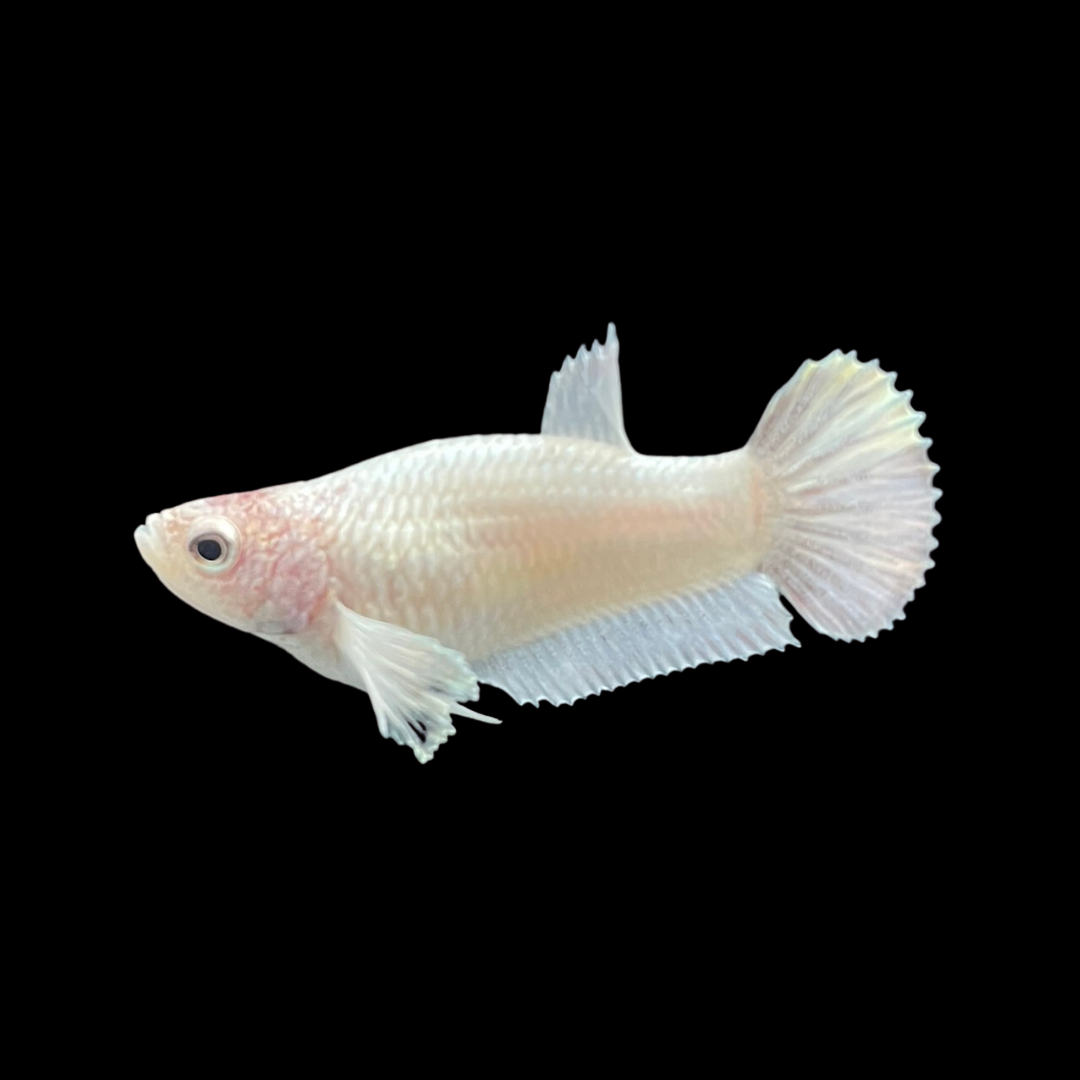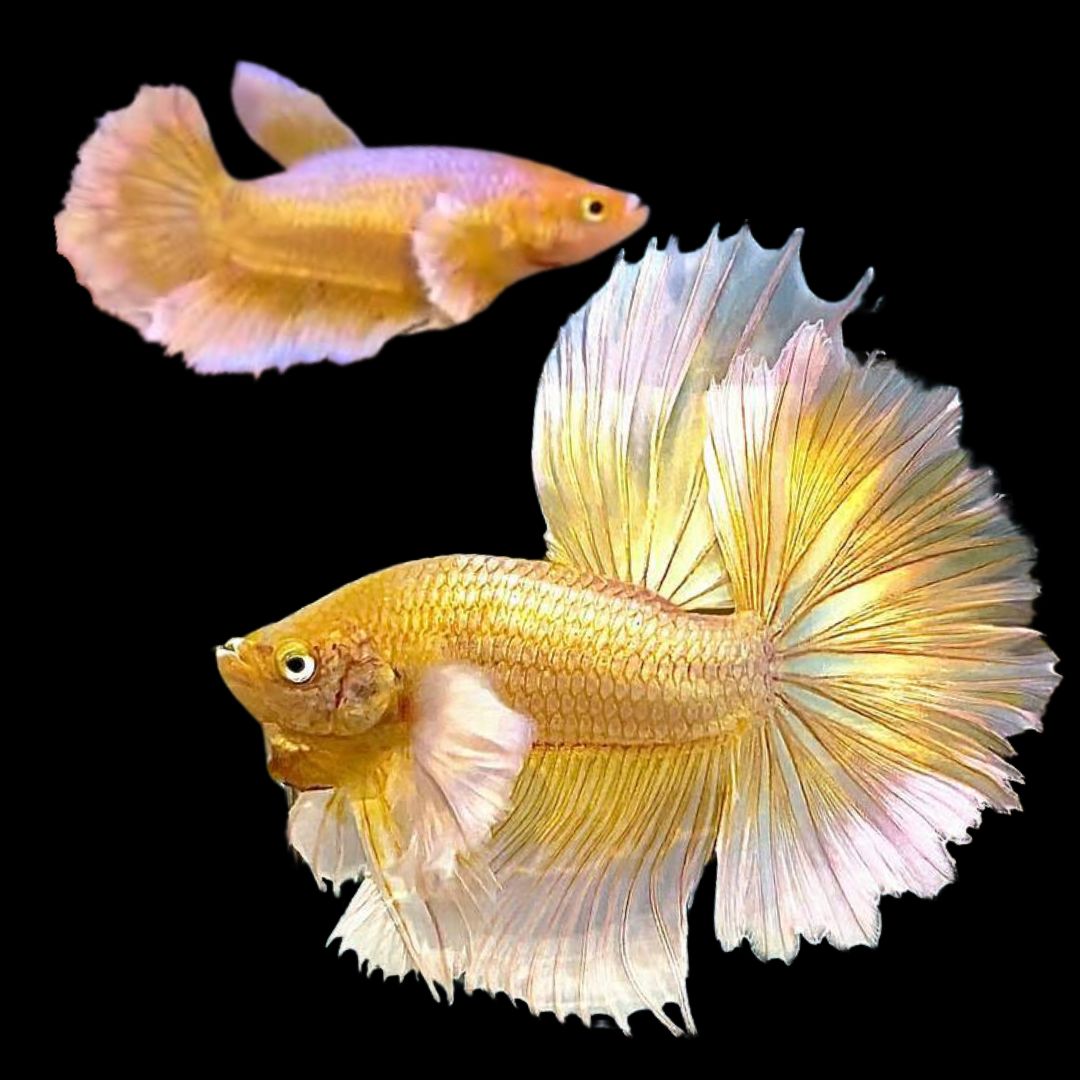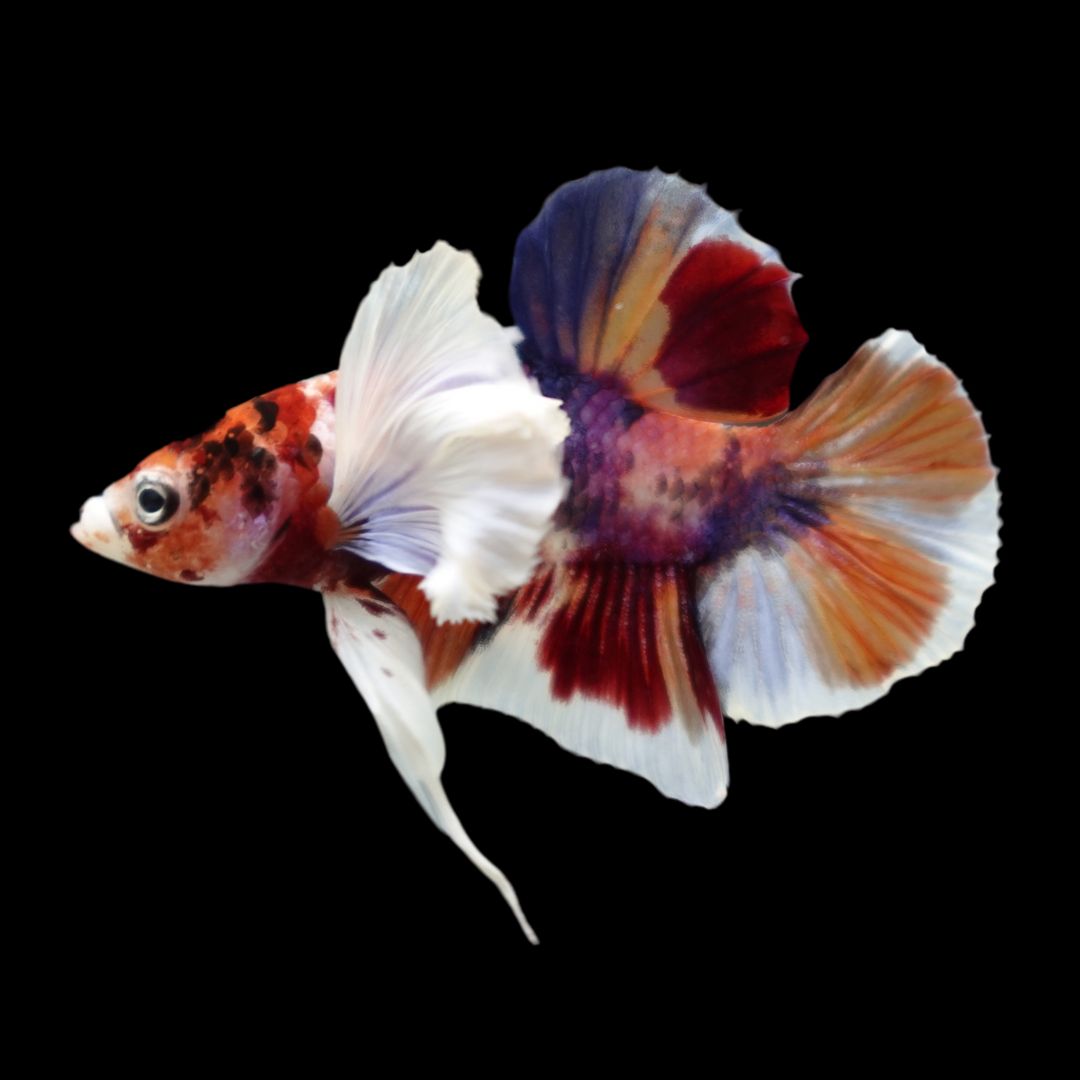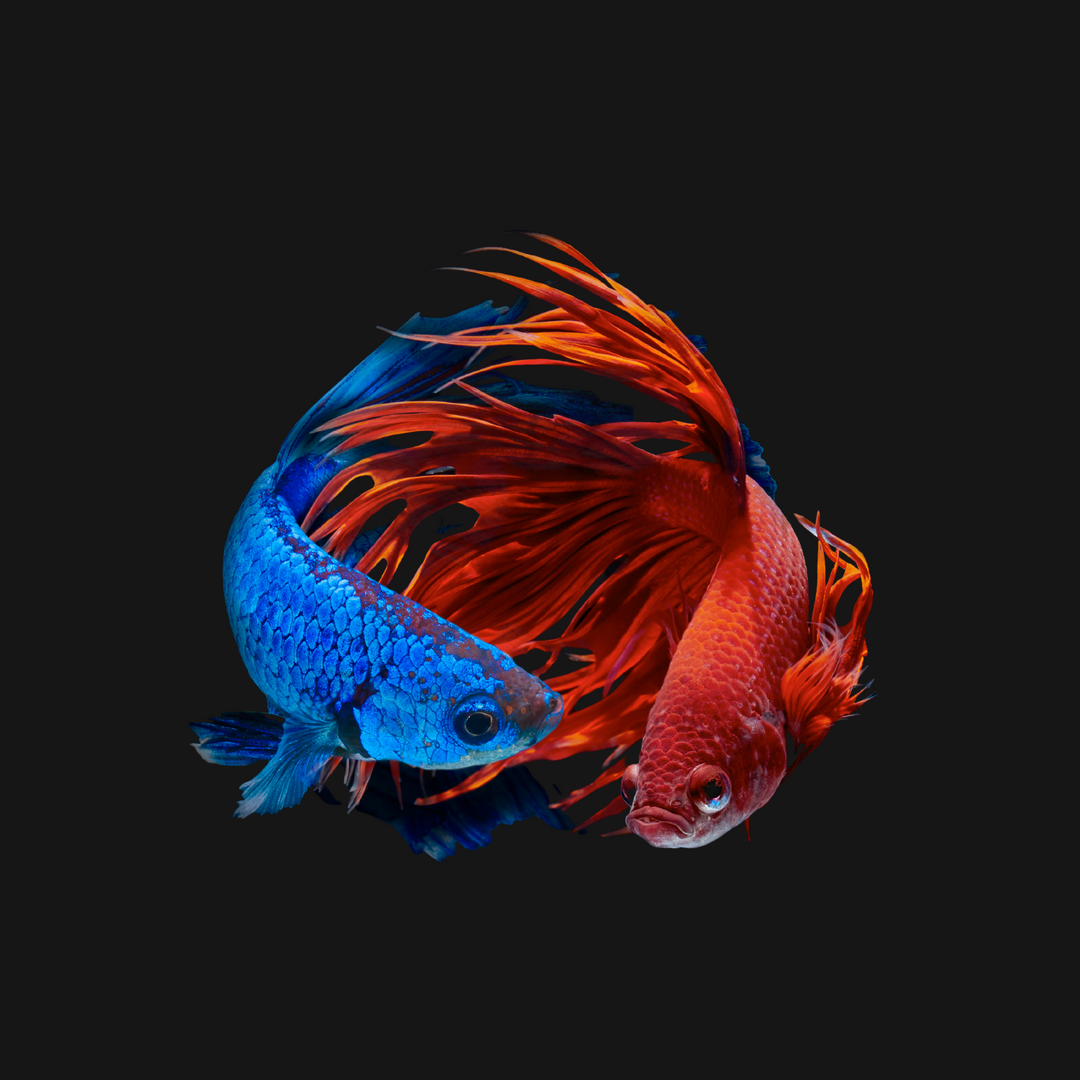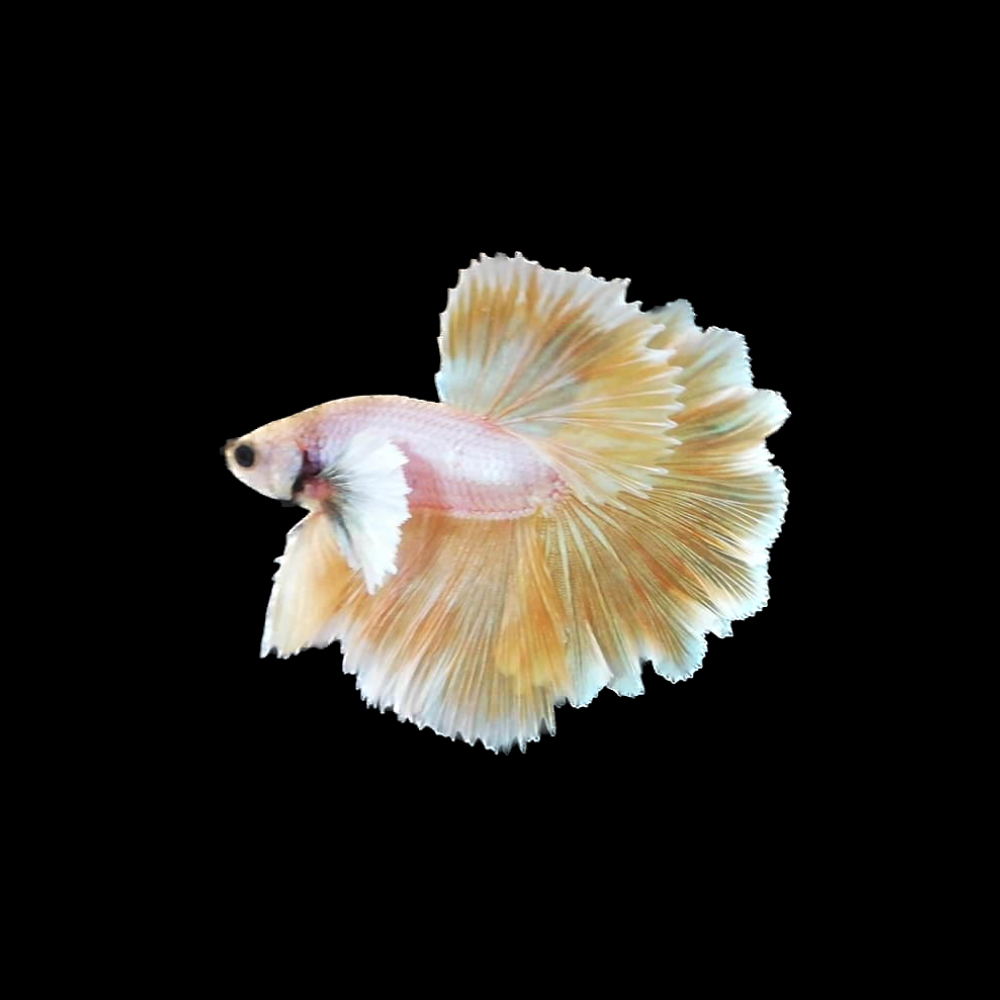
Dumbo
FAQs
About Dumbo Betta
The elephant ear betta, also known as the dumbo betta, is distinguished by its eye-catching pectoral fins that resemble elephant ears due to their distinctive look and more pronounced fins than other fish.
Large pectoral fins of elephant ear betta give their swimming a captivating, fluttering appearance.
The dumbo betta is a native of Thailand and was selectively bred to produce short-tailed bettas with bigger pectoral fin bettas. Through careful breeding, bettas with huge pectoral fins have been produced in multiple generations. These fish are now referred to as "Elephant Ear Betta" in Thai as "ปลากัดหูช้าง". It's also crucial to remember that early dumbo bettas lacked the vibrant color of these early elephant ear bettas. To improve the color intensity and beauty of elephant ear betta, betta breeders have, overtime, bred them with species that have bright colors.
The maximum size of the elephant ear betta is 8.9 cm (3.5 inches) in length. However, they usually reach maturity at 6.5 cm (2.5 inches).
Halfmoon elephant ear betta, Crowntail elephant ear betta, Rosetail elephant ear betta, and super delta dumbo betta are the rare varieties. Each has distinctive fin and tail characteristics.
The dumbo elephant ear betta, often known as the Siamese fighting fish, is a member of the gourami family. The males of this violent fish are known to lead attacks against even members of their species. Due to this, housing two males in the same tank is impossible.
Elephant ear betta can live for two years, but with the right care, some can even live for three years or longer.
The most common fighting behavior in dumbo ear betta fish is Flaring. A male dumbo betta fish will move both operculums (gill coverings) forward in this demonstration to represent a larger body size.
A normal and healthy dumbo betta fish should be moving around and active. If your elephant ear betta fish spends most of its time at the bottom of the tank without any movement, it indicates lethargy.
Elephant ear betta fish comes in
different colors, such as grey, blue, light green, dark green, red, brown, and
pink.
Our Legacy
We work tirelessly for 30 years to uphold the high standards set by our Thai ancestors and fellow breeders, ensuring that each and every Betta Fish for sale we produce is of the highest premium quality and meets the expectations of our customers. When you buy live betta fish online from us, you're not just purchasing a beautiful and captivating pet. You're also becoming a part of a long and rich history, and joining a community of people who appreciate and value the beauty and wonder of these amazing Betta Fish.
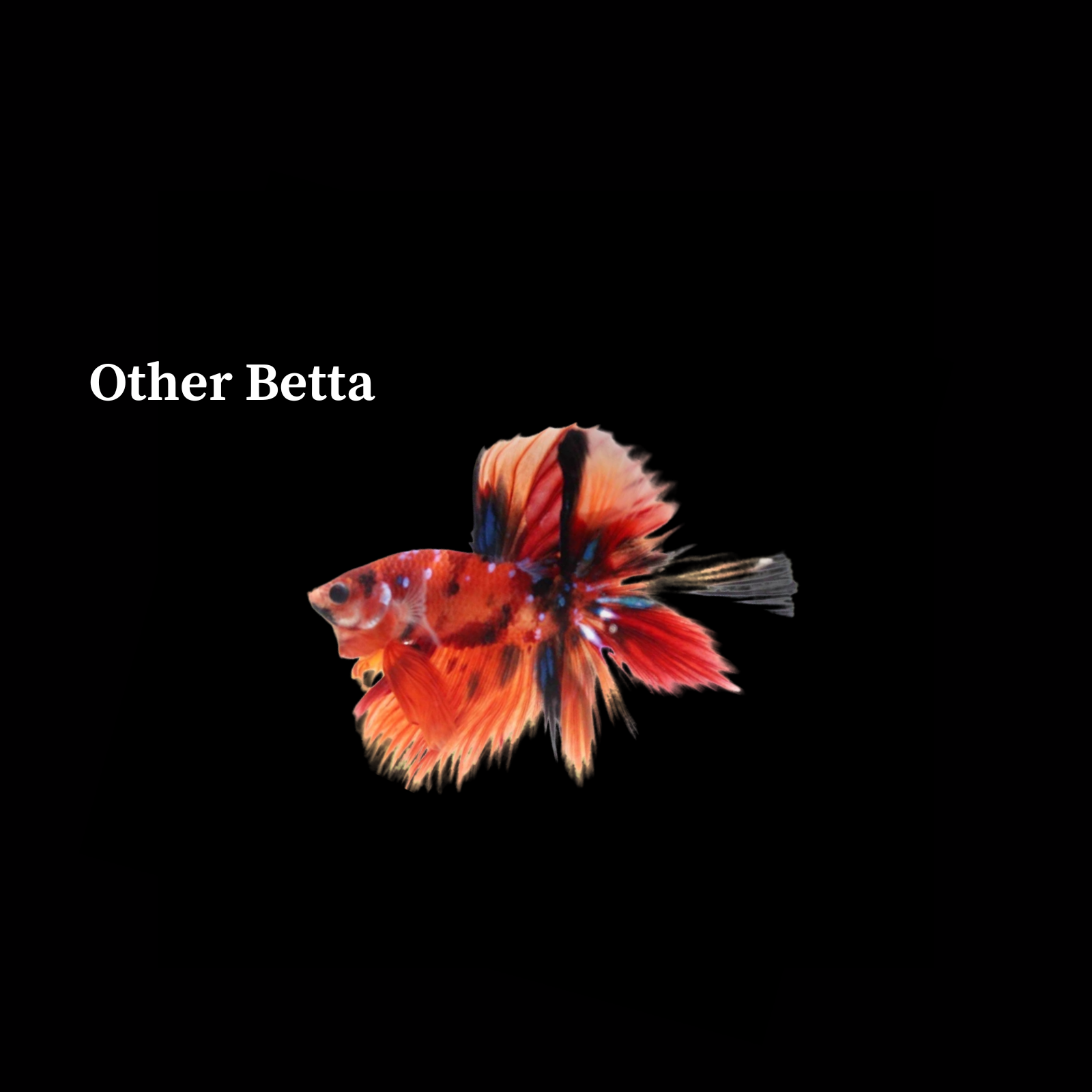

Q&A
Dumbo Betta Care Guide
It's true that dumbo ear betta is easy to care for and requires little upkeep, but you must provide them with their ideal tank requirements. While your dumbo betta can survive in a small fishbowl, giving it plenty of area to move around, a filter and a heater will make it happy and prolong its life. To learn about ultimate care and how you can make your elephant ear betta fish happy, just read this blog post.
The ideal types of water for your dumbo betta fish are tap water or spring water. To make testing easier, keep water test strips on hand. Additionally, you can add aquarium salt to the water of your betta fish to help shield them from common parasites and fungi.
Dumbo betta fish prefers calm water with a pH of 6.8 to 7.5 and a temperature between 76° to 85° F. Maintaining all the required tank conditions for optimum growth is important.
We advise maintaining elephant ear betta in aquariums with at least 5 gallons of volume. But to give them plenty of room to swim and explore, they need 20 gallons.
Like all other creatures, dumbo ear betta also needs sleep to rest. The fact that betta fish don't close their eyes makes it difficult to tell when they are asleep.
The optimum temperature range for dumbo elephant ear betta is 78–80°F (25.5–26.5°C). Dumbo ear betta fish can also handle water temperatures between 72 and 86 degrees Fahrenheit (22 and 30 degrees Celsius). If the water is outside that range, they can die.
Your betta could show signs of drunkenness, like swimming in circles or drifting with the current. Elephant ear betta may sink to the bottom and be unable to come up, or they may not be able to swim downward. A sick dumbo betta could also float and remain on the water's surface.
Yes, the super delta dumbo betta has the same tank requirements. It is a rare type of dumbo bettas.
Abrupt Temperature changes, tank environment, and water quality can cause stress in dumbo betta.
The elephant ear betta is a freshwater tropical fish that grows with age. They are considered fully developed when they are around 7 months old. Their growth also depends on the care and the environment.
Yes, but bowls are not recommended for dumbo halfmoon betta because they need ample space to swim and live.
Female dumbo betta can not give birth because these fish are oviparous and lay eggs in water. Bettas are not considered pregnant because they do not give birth to live young.
Yes, halfmoon elephant ear betta has teeth and can bite. If you decide to acquire a dumbo betta, you must know its behaviour, the conditions it needs, and the ideal tankmate for your betta, especially in households with kids or other pets.
Running water has strong water currents. Elephant ear betta are not strong swimmers; their long fins can not move quickly under strong water currents. Bettas love motionless or slowly moving water. Because of this, some betta keepers insist on keeping their fish in unfiltered tanks that mimic their native ecology.
Although dumbo ear betta fish may breathe air at the surface, their tank water must contain oxygen to survive. Dumbo betta fish can survive in water with less dissolved oxygen, but it is not recommended.
Do not turn it off, just slow down the heating speed. Some experts advise unplugging the heater, but doing so runs the risk of the surrounding temperature decreasing rapidly, and you forget to plug it back in. When the temperature in an aquarium suddenly and drastically drops, Ich or other parasites can appear.
A super delta dumbo betta should be fed one whole portion once daily or two half portions twice daily. We advise feeding your betta twice daily to make them happier and more engaged.
Elephant ear betta can live 10 to 14 days without eating. Their stomachs are as little as their eyes. Therefore, they don't need much food to survive.
Protein-rich feed is the best for the dumbo elephant ear betta, such as
frozen bloodworms, blackworms, brine shrimps, and daphnia.
Feed your fish on the proper schedule, so if you feed them at the exact times every day, like 7 a.m., 12 p.m., and 6 p.m., you'll find them waiting for you at those times!
If the dumbo betta lives in a tank with other tank mates, then night feeding could be a better chance of acquiring enough food because the other fish can be less active at night.
Dumbo halfmoon betta has good daytime eyesight but limited night vision. Therefore, providing the finest lighting setup for your dumbo betta is crucial for healthy eyesight.
The metabolism of dumbo betta starts to slow down at 55°F, which lowers its intake requirements. When the water temperature falls below 40°F, it’s time to stop feeding until spring. When the temperature is below 60°F, the bacteria in your filter also decrease their activity.
Halfmoon elephant ear betta does not prefer the specific color spectrum of light, but providing a natural daylight spectrum is recommended because it closely resembles their natural habitat.
Yes, dumbo betta can survive 7 days without a filter. But make sure the water is aerated and clean.
Yes, dumbo halfmoon requires a heater in the tank unless the outside air temperature is above 78 degrees Fahrenheit.
Live plants help clean the water by removing waste from your dumbo betta’s tank and giving your dumbo betta a beautiful natural habitat.
Bettas will happily nap on fake or real plant leaves inside the tank. To choose the decor, remember that sharp edges should always be avoided. These can be a major risk to your Betta, injuring their skin and fins by scratching or shredding them.
Elephant ear betta like live plants because these plants improve the oxygen content in water and lower dangerous ammonia and nitrate concentrations, which can stress or even kill your betta. Like artificial plants, they offer places to hide and relax and can prevent boredom in betta fish.
Yes, salt helps dumbo halfmoon betta in some diseases to cure. You need to use the appropriate amount of salt. In some cases, chemical medicine is a preferable option. We advise using both aquarium salt and medication for various ailments.
Yes, it can happen. Remove dead elephant ear betta to prevent disease from spreading to other fish in your aquarium. Even if fish seem in good health, they could infect people. Tell your healthcare practitioner you have a pet fish if you get unwell soon after buying new fish or cleaning your aquarium.
Yes, Elephant ear betta fish can live in tap water. However, you need to thoroughly prepare the water before adding the fish.
No, elephant ear bettas are not friendly. They are pretty aggressive and are referred to as fighting fish. They threaten and attack other fish species.
An elephant ear betta fish is the perfect pet for those who appreciate their beauty and are prepared to give them the proper care, including appropriate tank conditions, upkeep, and balanced food. They can enhance the aquarium with a fascinating and distinctive presence and do best in a clean environment.
You should change the water every week. Some fish keepers keep them to the bow, which raises their stress level and damages their skin. You should change and clean the tank water once a week for their perfect growth and health.
Elephant ear betta fish are very easy to breed, but getting their traits is extremely difficult because this trait is one of the most recessive in bettas. Only a few fries get elephant ears, even if both males and females have them. To understand the complete breeding process of dumbo betta, click here.
Elephant ear betta are special because of their distinctive appearance. It possesses a pectoral fin that is enlarged and resembles elephant ears. It also moves gracefully and has beautiful colors.
No, dumbo halfmoon betta fish can not survive in freezing water. You should provide them with the right conditions for their survival and growth
Yes, dumbo halfmoon betta jump in tank. They enjoy moving, swimming, and jumping. To know more about the interesting facts and information, click here.
Yes, male dumbo betta can change color in case of illness, stress, and old age.
Due to their aggressive nature, the two male dumbo betta cannot be kept together in one tank. Only one male can be kept in an aquarium.
The gestation cycle for female dumbo elephant ear betta lasts one to two weeks.
Many fish species can get along well with the dumbo half moon, such as Zebra Danio, Placostomus, schooling fish, Corydoras, and Snails.
Female elephant ear betta does not fight and is less aggressive than male dumbo betta.
Dumbo ear betta female can carry their eggs for 1-2 weeks.
Male dumbo halfmoon betta have eyes but do not possess eyelids, so they can not blink.
No dumbo halfmoon betta male can not live with goldfish. These species have different tank requirements.


